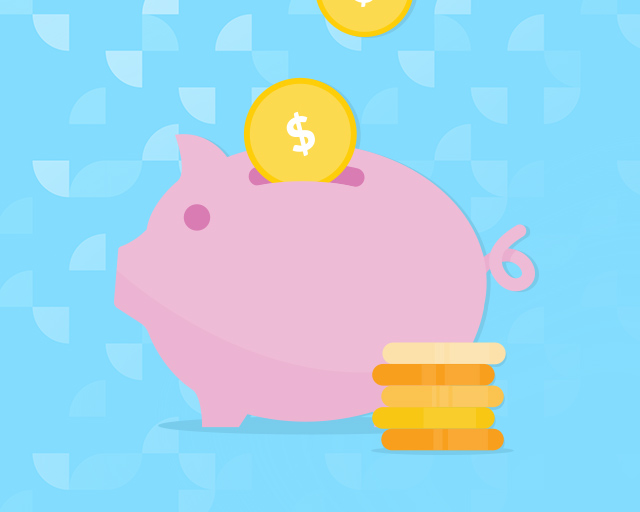

beyond basic budgets: three popular budget methods for managing your money
A basic budget can help you keep track of your money: what comes in, what goes out and what you’re saving for the future.
A basic budget can also help you get out of debt and reach your financial goals.
But what if a basic budget doesn’t work for you?
Don’t worry. Everyone has a different style of managing their money, so it makes sense you might want to use a different type of budget.
Keep reading to learn about two popular budget methods you can try.

the 50-30-20 budget
This budget is all about simplicity. You allocate 50% of your take-home pay to necessities; 30% to discretionary spending; and 20% to savings and debt.1
Here’s more about each category:
necessities
Half of your monthly income will go to things like rent or mortgage payments, groceries and utility bills. Necessities also include minimum payments to keep your credit accounts in good standing.
If your necessities make up less than 50% of your income, put the extra toward savings and debt payments. If they make up more than 50%, try to figure out how you can lower those expenses.
discretionary spending
Discretionary spending is such a formal phrase. Why don’t we just call this the fun category? And yes, 30% of your income can be spent here.
Fun spending covers eating out, streaming services, concerts, gym memberships and whatever else you like. They aren’t must-haves, but that’s what’s great about the 50-30-20 plan: You don’t have to give up fun.
savings and debt payments
This includes savings for retirement and emergencies. Also, savings for specific goals like a down payment on a house, or the family vacation you want to take next year.
This category is also for debt payments beyond your minimum monthly payments. You can make extra payments on your credit cards or pay down the principal of loans you have. What’s the best part of paying off debt? More money for savings!
If you want to put more than 20% of your income here, it’s best to take it from the fun category.2
the zero-based budget
The idea behind zero-based budgeting is that when you subtract your monthly expenses from your monthly income, you’ll end up with zero dollars.3
Wait, isn’t zero dollars bad? Where’s the money for fun stuff or savings? Don’t worry, they’ll be built into your zero-based budget.
You get to zero dollars because you’re giving every dollar a “job.” That way you know where every dollar goes, and you’re less likely to blow any extra money you have each month.
Here’s how it works. First, add up your sources of income, including any child support or money from side gigs.
Next, add up all of your expenses, from rent to your cell phone bill. Don’t forget groceries, gym memberships and household expenses.
Subtract your expenses from your income. Whatever’s left needs a job. Here’s an example.
monthly expenses
- rent – 1,250
- debt payments – 650
- groceries – 450
- utilities – 250
- transportation – 100
- cell phone – 150
- entertainment – 200
- eating out – 200
- insurance – 200
- clothing – 150
- household items – 100
- gym – 50
- miscellaneous – 300
- savings – 200
total expenses – $4,250
When you subtract $4,250 from $4,500, that leaves $250.
It needs a job. Would you use it for savings or paying down debt? Guess what? You can give it more than one job.
For our example, we’ll give half of the $250 the job of extra savings, and the other half the job of paying down debt.
monthly expenses
- rent – 1,250
- debt payments – 650
- groceries – 450
- utilities – 250
- transportation – 100
- cell phone – 150
- entertainment – 200
- eating out – 200
- insurance – 200
- clothing – 150
- household items – 100
- gym – 50
- miscellaneous – 300
- savings – 200
- extra savings – 125
- paying down debt – 125
total expenses – $4,500
Now every dollar in your budget has a job, and your income minus your expenses equals zero.
And remember, it’s your budget, so feel free to break it down into as many categories as you need.
One last thought about the zero-based budget: It’s more detail-oriented and there’s less room for error. Be sure to keep a small emergency fund in case something comes up and you’re hit with a large expense.3
the envelope system budget
If you are looking for a more physical way of maintaining a budget, the envelope system, or sometimes known as cash stuffing, might work well for you. Here is how you can get into the envelope system in three easy steps.4
1. assign your envelopes
Think about what you spend your paycheck on each month and create categories based on those expenses. These can be as simple as food, entertainment, gas and more or as specific as restaurants, books, yard care and more. Assign as many envelopes as you are comfortable with.
2. create spending limits
Once you have your expense categories, write down on each envelope how much your maximum spend would be in that category per month. Once you have the amounts written for each envelope, fill each with that amount.
3. adjust when needed
After a few months of using the envelope system you may need to adjust your spending limits if you notice your first estimates were off. That’s okay, it takes time and practice to get to the right budget amounts.
Which budget will you pick?
Does the 50-30-20 budget sound like a budget you want to try? Maybe the zero-based budget is more your speed. Some of you might prefer the envelop system. Or the basic budget plan might be all that you need.
Whichever one you choose, track your progress every month to stay on top of how you’re doing. If your situation changes, update your budget and keep going. You’ll be glad you did.
1 https://www.experian.com/blogs/ask-experian/how-to-make-a-budget/
2 https://www.experian.com/blogs/ask-experian/what-is-the-50-30-20-rule/
3 https://www.experian.com/blogs/ask-experian/what-is-zero-based-budgeting/
4 https://www.experian.com/blogs/ask-experian/how-to-get-started-with-envelope-budgeting/








